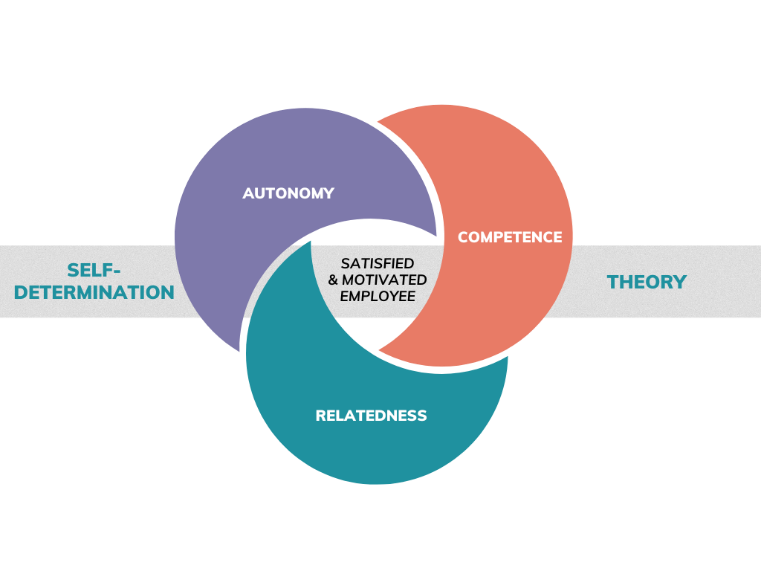You can search the term employee engagement online and find a slew of recommended “Cs and Es” that promise to help you get the job done. However, you are a busy professional and don’t have the time to read the top 60 (or more) ideas on how to engage and motivate your employees. Have no fear! We have drilled into the psychological side of what it takes to motivate your employees to save you time so you can begin implementing new processes that will nurture and drive your employees based on their basic, psychological needs. This may not be overall groundbreaking, but sometimes we need a reminder of what we already know.
But first, a little history.

In 1985, Edward Deci and Richard Ryan established the Self-determination Theory (SDT) - a motivational theory of personality, development, and social processes. They found that there are three fundamental psychological needs humans need to be satisfied: autonomy, competence, and relatedness; and that fulfilling these needs promotes effective functioning, well-being, and overall motivation (i.e. in the workplace).
Simply put, these three basic needs mean people tend to be more motivated when they have some sort of say or control in how they work, feel competent at their job (but the task can’t be too easy or too hard), and have a sense of belonging and connection with their peers.
Now, let’s equate this to fostering motivated employees in the workplace.
Empowering Employees for Success
The first “bubble” of our diagram of the self-determination theory is the need for autonomy, or an individual’s desire for control and choice in their work environment. For credit unions, giving employees a sense of autonomy can have significant benefits to its overall success. By allowing your employees to exercise independence, make decisions, and contribute ideas, leaders can create an environment where employees feel valued and empowered. By fostering a sense of ownership and accountability, you’re driving your employees to go beyond their basic responsibilities and contribute creatively to the organization’s growth. Encouraging employee autonomy can be achieved by providing decision-making authority, involving them in goal-setting processes, and more.
Encouraging Growth and Development
The second psychological need identified in the SDT is competence, where a person wants and needs to feel capable and effective in their work. Your credit unions can promote competence by creating a culture that prioritizes continuous learning and development. Offering opportunities for training, upskilling, and mentorship programs allow employees to enhance their professional capabilities, which leads to increased job satisfaction and motivation. Additionally, providing regular feedback, recognizing achievements, and challenging your employees with meaningful tasks further fulfills their competence cup. By investing in your employees’ growth, you can cultivate a motivated and highly engaged workforce.
Fostering Connection and Collaboration
Our third basic need in the SDT is relatedness, which underlines the importance of positive social connections and a sense of belonging. Building a strong sense of relatedness within the walls of your credit unions is essential for employee engagement. Encouraging collaboration, teamwork, and open communication channels allows employees to form meaningful relationships with their colleagues. These strong bonds foster a supportive environment for all, enhance job satisfaction, and create a sense of belonging. Credit union leaders can promote relatedness by organizing team-building activities, forming a culture of inclusivity, and recognizing and celebrating shared achievements.
Credit unions seeking to cultivate an engaged workforce can draw valuable insights from the self-determination theory. By adopting practices to address the above three basic psychological needs, you in turn can create a nurturing workplace environment. Empowering employees with autonomy, encouraging growth and development, and fostering a sense of connection and collaboration are pivotal strategies for any credit union to enhance employee motivation, job satisfaction, and overall performance. By prioritizing these aspects, you can push your organization toward long-term success with an engaged and empowered team.
